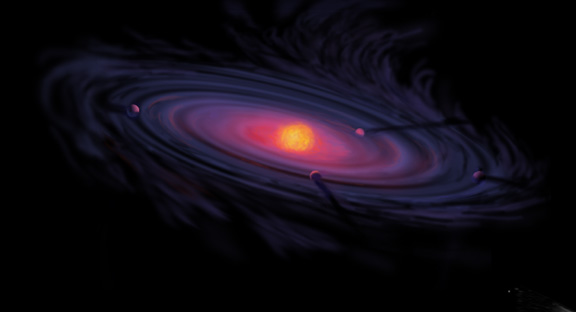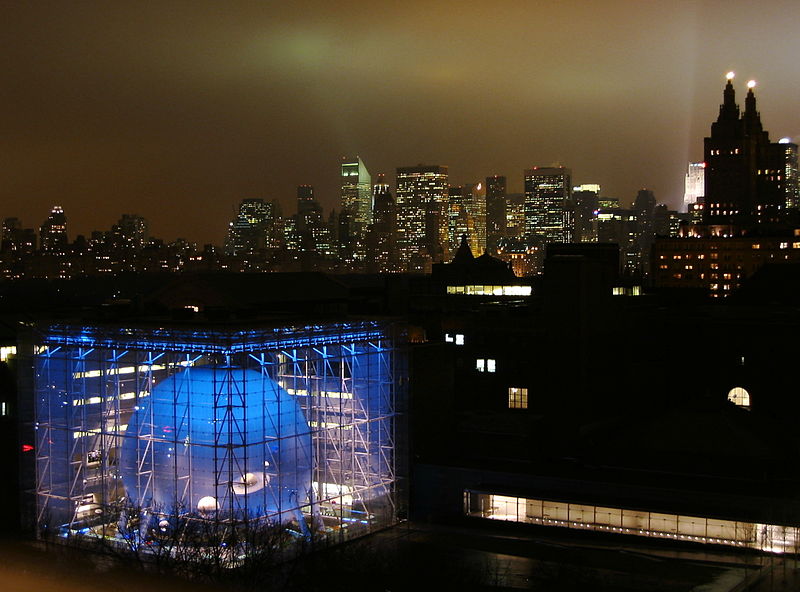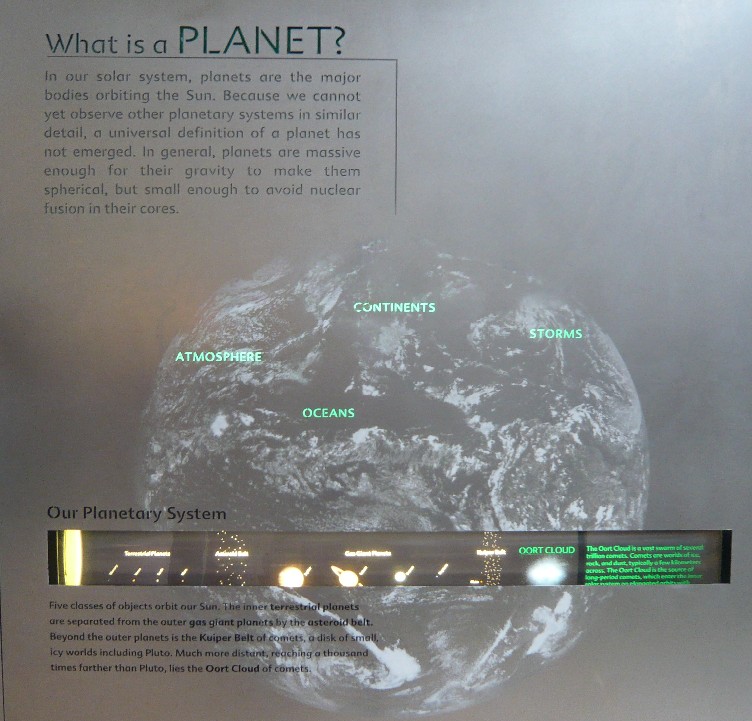
 |
|---|
Practice exam #4
Practice exam #3
Practice exam #2
Practice exam #1
Practice exam #2
Practice exam #1
Class is on for March 20. The schedule was wrong.
There are many different paths toward getting a good grade; either by doing well on the exams, by doing challenge problems, by doing extra credit, or by taking alternative-style tests. If you do good work you'll get a good grade.
The exams will be curved.
Exam #1 is on Wednesday February 22.
Mastering Astronomy has a practice exam "Exam 1" that is geared toward the first exam.
Assignment 2 is due February 20.
The code for MasteringAstronomy is "MARON1" and the course name is "Astro101Spring2017".
Exam 1 answer key. Question #2 was ill-posed and was dropped.
1 B 11 C 21 C 2 12 B 22 B 3 C 13 C 23 A 4 A 14 C 24 D 5 B 15 C 25 C 6 B 16 B 26 B 7 C 17 C 8 C 18 C 9 B 19 C 10 A 20 A
This course is an introductory level overview of the structure and properties of the Solar System, Sun, planets and their moons, comets, asteroids, meteors and more. The general principles of planetary motion and evolution will also be covered such as the appearance and motion of the Sun, sky, Moon and planets, gravity, the nature of light, magnetism and earthquakes. The properties of other newly discovered solar systems, the formation, evolution and fate of solar systems and the conditions for life here and elsewhere will also be discussed.
Learning outcomes: Students who succeed in the course may eventually respond to:
*) How is astronomy of practical, daily use and how has this science impacted our culture?
*) How do we know our place in the solar system?
*) How do we know the properties of the Earth and other Solar System objects?
*) How do the sun and planets compare to the earth (size, temperature, speed, etc.)?
*) How did the Earth form and could there be life elsewhere?
Lecture: Monday 10:00AM - 11:50AM, Wednesday 11:00AM - 11:50AM. Room 1M07
Text: "Astronomy Today", Volume 1, Chaisson & McMillan, 8th edition
Email: jasonmaron@gmail.com
Office hours: Monday 12PM-1PM, cafeteria
Wednesday 12PM-1PM, cafeteria
Jan 30 Mon 1.1-3 Orientation, sun and sky motion
Feb 1 Wed 1.3-4, 1.6 Celestial sphere, coordinates
Feb 6 Mon 1.5 Lunar motion
Feb 8 Wed 2.2-3, 2.6 Planetary motion, Copernicus
Feb 13 Mon HW #1 Lincoln's birthday
Feb 15 Wed Mon. sched 2.4 Galileo's observations Monday schedule
Feb 20 Mon HW #2 2.5, 2.7 Kepler's laws. Newton's laws & gravity
Feb 22 Wed Exam #1 Chapters 1,2 Solar system size and structure
Feb 27 Mon 3.1-5, 4.1-2 Light and Kirchhoff's laws
Mar 1 Wed 16.3, 16.5 The sun's atmosphere
Mar 6 Mon HW #3 16.5, 7.5 The sun-Earth connection
Mar 8 Wed 7.1, 7.3-4 Earth's interior and surface
Mar 13 Mon 7.2 Earth's atmosphere
Mar 15 Wed HW #4 7.4, 7.6, 8.2-5, 8.7-9 Moon & tides
Mar 20 Mon
Mar 22 Wed Exam #2 Ch 3,4,7,8,16 Sun and Earth
Mar 27 Mon 6.2, 8.1-9 Cratering, planet temperature
Mar 29 Wed 9.1-6 Venus
Apr 3 Mon HW #5 10.1-7, 11.1-4 Mars & Jupiter
Apr 5 Wed 11.5 Jovian moons
Apr 10 Mon No class Spring break
Apr 12 Wed No class Spring break
Apr 17 Mon No class Spring break
Apr 19 Wed 12.1-5 Saturn & rings
Apr 20 Thu HW #6 13.1-6 Uranus & Neptune Monday schedule
Apr 24 Mon Exam #3 Ch 6, 8-13 The major bodies
Apr 26 Wed 14.3 Pluto
May 1 Mon 14.2-3 Comets, Kuiper belt
May 3 Wed HW #7 14.1, 4 Asteroids
May 8 Mon 15.1-2 SS formation & evolution
May 10 Wed 15.3-5 Extrasolar planets
May 15 Mon 28.1-4 Extraterrestrial life
May 17 Wed Last class
May 24 Wed Exam #4
%
Homework 20 8 problem sets from MasteringAstronomy. Lowest grade dropped
Exam 1 15 Solar system size and structure
Exam 2 15 The sun and Earth
Exam 3 15 The major bodies
Exam 4 15 Minor bodies and solar system evolution
Participation 20 Attendance, extra credit problems and labs, bonus points,
in-class presentations, etc.
Homework:
Tests and final exam:
There will be 4 in-class tests on major course topics. They are open everything
(notes, exercises, text, study guide, calculator, dictionary for translating),
multiple-choice and fill-in-the-blank. The final exam (Test 4) will be the same
exact format as the others and will only cover the last topics reviewed. The
date and time listed for Test 4 are unofficial and will be finalized by the end
of the semester.
If you must miss a test, please inform me ahead of time to
reschedule.
Each exam is accompanied by a study guide on MasteringAstronomy.
The course is based on Chaisson & McMillan and the following are optional supplemental notes.
* Solar system
* Youtube videos
* Telescopes
* Fundamentals of science (units, magnitudes, etc.)
* Astrobiology
* History of civilization
* History of science
* History of cosmology
* Natural disasters
* Space exploration
* Climate science
* Physics of "Game of Thrones". Valyrian steel, wildfire, etc.
* Pop-science articles
The following practice exam is much more difficult than the actual exams will be.
Practice exam
Everything below this point is optional extra credit opportunities. You can work in small groups and turn in one writeup for the group.
Any problem from Chaisson & McMillan.
* New Horizons
* Wine and Scotch
* Speed of light
* Coins
* Launch cost
* Water footprint of rice
* Bamboo
Visual resolution
Pinatubo
Contribute to a Wikipedia science article.
Construct timelines for the history of science using Wikipedia.
Find useful science Apps.
Find youtube science videos with good educational and entertainment value.
* Attend the York Observatory Public Open Night, 2nd or 3rd Wednesday of the month.
* Labs. Choose any lab.
Construct a balance. Place a baseball on the left side and place pennies on the right side until balance is achieved. What is the mass of a baseball in pennies? Bring the balance to class as an exhibit.
 |
 |
|---|---|
The fourth floor of the American Museum of Natural History traces the evolution of vertebrates from 400 million years ago to the present. Start in the southwest corner, watch the video, and then proceed north. The exhibit comprises a loop that returns the southwest corner.
The exhibit that was responsible for the demotion of Pluto is underneath the Planetarium. Notes.
Other fine exhibits:
The "Hall of Human Origins" on the first floor on the south side.
The gems, minerals, and meteorites exhibit on the first floor in the southwest corner.
The Hall of Ocean life on the 2nd floor.
The Hall of Planet Earth on the 2nd floor in the northeast corner.
The Bird dioramas on the 3rd floor.
York has a minerals exhibit on the 2nd floor on the north side. At present, the names of the minerals are given but not the chemical formulae. For extra credit, look up the formula for each mineral on Wikipedia and mail it to jasonmaron@gmail.com so that we can build up a database of formulae and update the exhibit. Some of the formulae are already on this page.
Find a topic in science and read all appropriate material on the web about it, especially Wikipedia. Give a short in-class presentation about the topic. Or, you can contribute to a Wikipedia article.
Potential topics:
Greenhouses: Water and fertilizer requirements for various plants.
Find data for the water quality of rivers, expressed as "Biological oxygen demand", the amount of dissolved oxygen required by aerobic biological organisms to break down organic material in the water sample, expressed in milligrams of oxygen per litre of water. This is an area where Wikipedia needs data.
Iron fertilization of the oceans.
Find examples of destructive patents.
Build a figure and submit it to Wikipedia.
Make a world map figure for any topic in science. These are called "choropleth maps" and they can be made with python or other software.
Bees.
Any topic from the history of science.